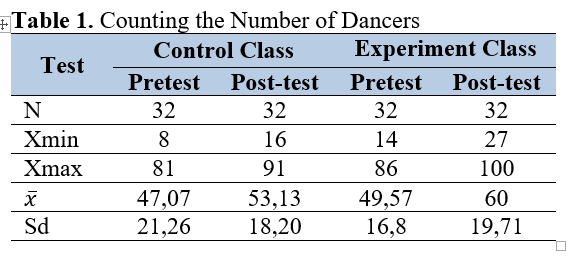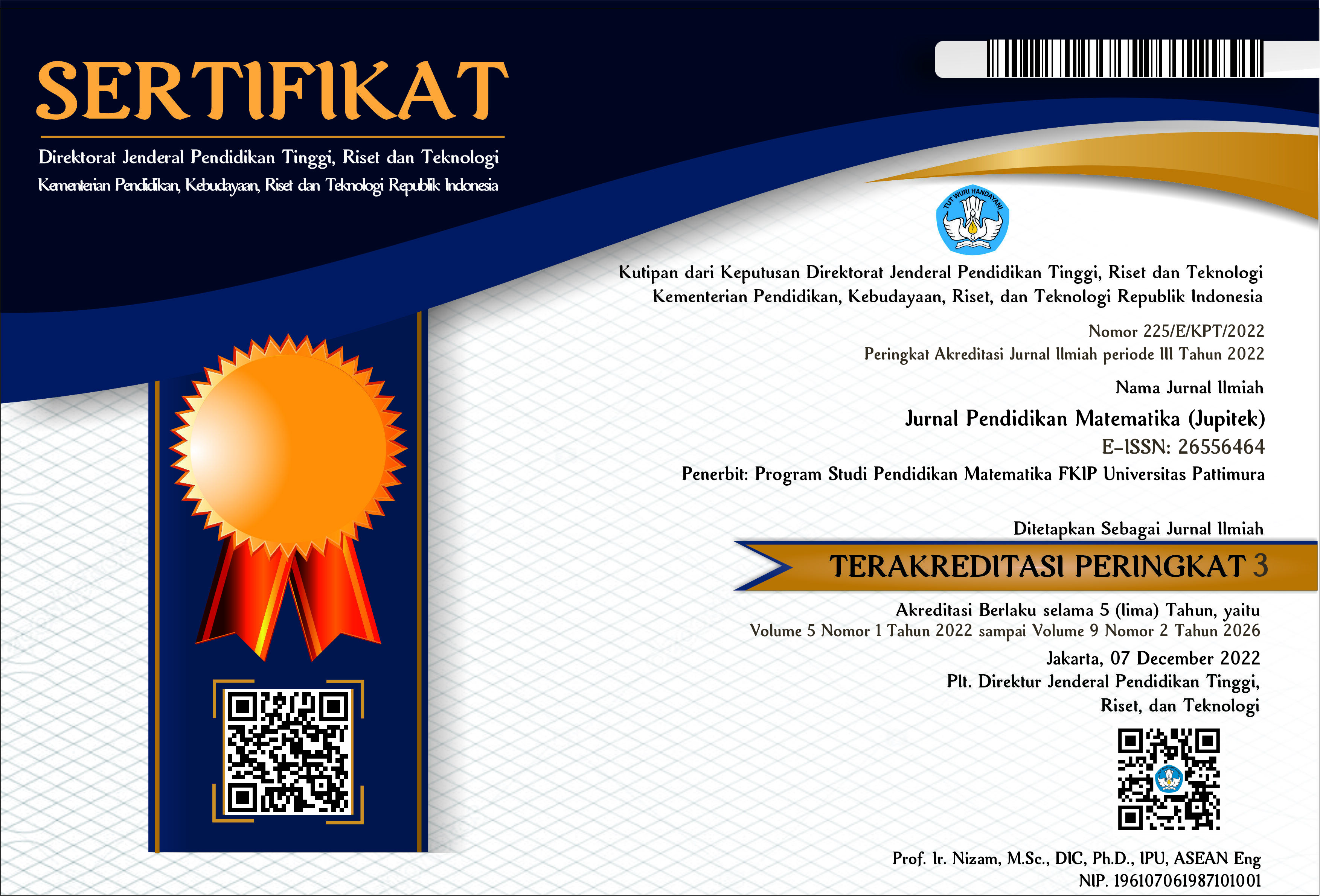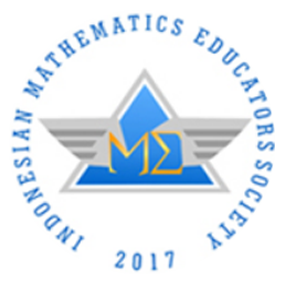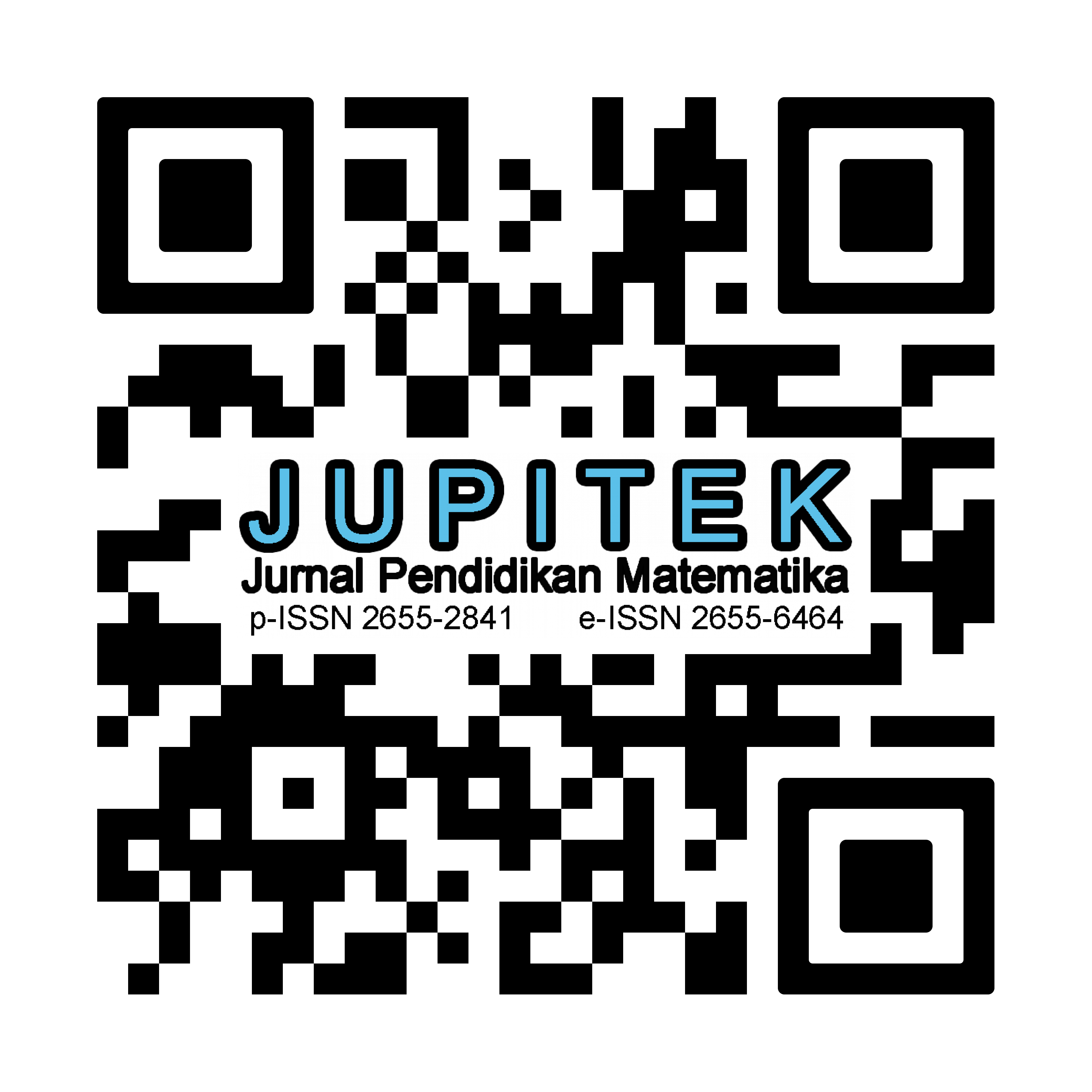IMPLEMENTATION WORKED EXAMPLE-BASED LEARNING TO IMPROVE JUNIOR HIGH SCHOOL STUDENTS' MATHEMATICAL REPRESENTATION ABILITY
Abstract
The purpose of this study was to apply worked example-based learning as an effort to improve the representation ability of junior high school students. This research is a quasi-experiment study with a non-equivalent control group design. The population in this study were all students of class VIII SMP Negeri 1 Talang Kelapa, Banyuasin, South of Sumatera, with a purposive sampling technique taken two classes as the sample. Samples on select from is student in class VIII.3 were used as experiment class, and class VIII.4 used as a control class. The instrument that used in this research is a mathematical representation test. The validation of this instrument was carried out by an expert review. Analysis the data using t-test with independent samples test. From the results of data analysis show the average final ability of students' mathematical representations in the experimental class was the same as the average final ability of students in the control class with Asymp.Sig (1-tailed) = 0.086. But, the average value of the post-test in the experimental class was 60, and the average value of the post-test in the control class was 53.13. Its meaning that the average test score of students' mathematical representation abilities in the experimental class was higher than the average ability test score mathematical representation of students in the control class
Downloads
References
Agustina, T. B., & Sumartini, T. S. (2021). Kemampuan Representasi Matematis Siswa melalui Model STAD dan TPS. Plus Minus, Jurnal Pendidikan Matematika., 1(2), 315–326. https://doi.org/http://doi.org/10.31980/plusminus.v1i2.1264
Al-Baqie, A. F. A. (2018). Pengembangan Buku Ajar Aljabar Dengan Menggunakan Worked Example. Universitas Islam Negeri Sunan Ampel.
Armadan, Somakim, & Indaryanti. (2017). Kemampuan Representasi Matematis Siswa Pada Pembelajaran Berbasis Teori Van Hiele di Materi Segiempat Kelas VII SMP Negeri 1 Indralaya Utara. Jurnal Elemen, 3(1), 49–57. https://doi.org/http://e-journal.hamzanwadi.ac.id/index.php/jel/article/download/306/pdf_53
Atkinson, R. K., Derry, S. J., Renkl, A., & Wortham, D. (2018). Learning from examples: Instructional principles from the worked examples research. Review of Educational Research, 70, 181–214. https://doi.org/http://doi.org/10.3102/00346543070002181
Chambers, P. (2008). Teaching Mathematics: developing as a self active secondary teacher. SAGE Publication Inc.
Handayani, H. E. P., & Nuraeni, Z. (2020). Pengembangan Modul Pembelajaran Matematika Berbasis Kemampuan Pemahaman Matematis Dengan Pendekatan Worked Example. Lentera Sriwijaya : Jurnal Ilmiah Pendidikan Matematika, 2(1), 13–21. https://doi.org/10.36706/jls.v2i1.9859
Irwansyah, M., & Retnowati, E. (2019). Efektivitas worked example dengan strategi pengelompokan siswa ditinjau dari kemampuan pemecahan masalah dan cognitive load. Jurnal Riset Pendidikan Matematika, 6(1), 62–74. https://doi.org/https://doi.org/10.21831/jrpm.v6i1.21452.
Mahpudin, A., Rosyid, A., Nuraeni, Z., Suparman, & Andriyani. (2020). Validity of an android-based mathematic equation editor product. International Journal of Scientific and Technology Research, 9(1), 1102–1106.
Mayer, R. E. (2002). Rote versus meaningful learning. Theory Into Practice, 41(4), 226–232. https://doi.org/http://doi.org/10.1207/s15430421tip4104_4.
Muryanto, D. (2020). Efektivitas Worked Example Pairs Pada Pembelajaran Daerah Penyelesaian Sistem Pertidaksamaan Linear Dua Variabel. EDUMAT. Jurnal Edukasi Matematika, 11(2).
Noorfitriani, I., & Rosyid, A. (2020). Peningkatan Kemampuan Pemahaman Matematis Siswa Menggunakan Worked Example. Mathline, Jurnal Matematika Dan Pendidikan Matematika, 5(1), 26–36. https://doi.org/https://doi.org/10.31943/mathline.v5i1.127.
Nuraeni, Z., Indaryanti, I., & Sukmaningthias, N. (2021). Pengembangan Perangkat Pembelajaran Bercirikan CTL Berbantuan GeoGebra Menggunakan Model Flipped Learning. Jurnal Elemen, 7(1), 58–69. https://doi.org/10.29408/jel.v7i1.2723
Nuraeni, Z., Rosyid, A., Mahpudin, A., Suparman, & Andriyani. (2020). Development of an android-based math equation editor. Journal of Physics: Conference Series, 1480(1). https://doi.org/10.1088/1742-6596/1480/1/012013
Nurhamidah, A. S., & Nuraeni, Z. (2018). Penerapan Model Pembelajaran SAVI (Somantic, Auditory, Visualization, Intellectually) Terhadap Kemampuan Representasi Matematis Siswa. Jurnal Matematika Ilmiah STKIP Muhammadiyah Kuningan, 4(2), 10–24.
Retnowati, E. (2012). Worked Examples in Mathematics. Proceedings 2nd International STEM in Education Conference Worked, 393–395.
Ruseffendi. (2005). Dasar-dasar Penelitian Pendidikan & Bidang Non-eksakta Lainnya. Tarsito.
Santosa, C. A. H. F., Rafianti, I., & Yulistiany, D. (2022). Worked-Example Method on Mathematical Problem-Solving Ability in term of Students’ Initial Ability. Kreano, Jurnal Matematika Kreatif-Inovatif, 13(2), 210–220. https://doi.org/https://doi.org/10.15294/kreano.v13i2.33301
Sweller, J., Ayres, P., & Kalyuga, S. (2012). Cognitive load theory: explorations in the learning science, instructional systems and performance technologies. Springer.

Copyright (c) 2023 Zuli Nuraeni, Ruth Helen Simarmata, Angelina Hosana Zefany Tarigan

This work is licensed under a Creative Commons Attribution-NonCommercial-ShareAlike 4.0 International License.
License and Copyright Agreement
By submitting a manuscript to Jurnal Pendidikan Matematika (JUPITEK), the author(s) certify and agree to the following terms:
- Originality and Authority: The submitting author is authorized by all co-authors to enter into this agreement. The manuscript describes original work that has not been published previously in a peer-reviewed journal, nor is it under consideration for publication elsewhere.
- Approval: Its publication has been approved by all author(s) and by the responsible authorities of the institutions where the work was carried out.
- Rights: The authors secure the right to reproduce any material that has already been published or copyrighted elsewhere.
- Licensing and Copyright: Authors retain the copyright to their work.
- License Grant: The authors grant Jurnal Pendidikan Matematika (JUPITEK) the right of first publication, with the work simultaneously licensed under the Creative Commons Attribution-NonCommercial-ShareAlike 4.0 International (CC BY-NC-SA 4.0).
- Self-Archiving: Authors are permitted and encouraged to deposit the published version of their article in institutional repositories, on their personal websites, and other academic platforms, with proper acknowledgment of its initial publication in Jurnal Pendidikan Matematika (JUPITEK).





.png)


